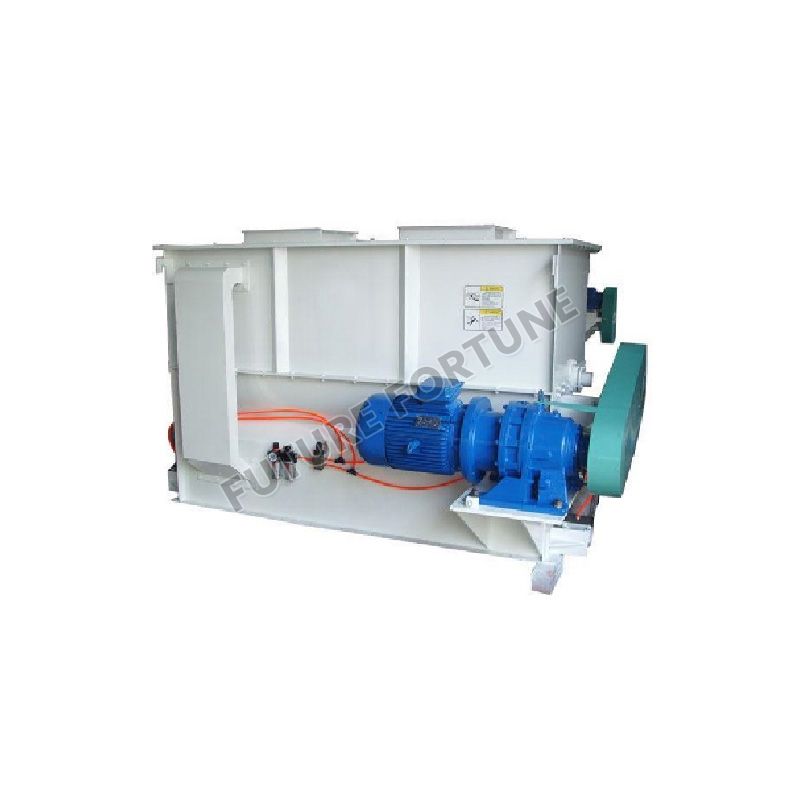Applications of Ribbon Mixers
In the realm of industrial mixing equipment, the ribbon mixer stands as a versatile and efficient solution for blending dry powders, granules, and other solid materials. With its unique design and mixing mechanism, the ribbon mixer has become an essential tool in industries such as food processing, pharmaceuticals, chemicals, and more. In this article, we delve into the functionalities, advantages, and applications of the ribbon mixer, highlighting why it is highly regarded as a reliable mixing solution in modern manufacturing processes.

The Design and Operation of a Ribbon Mixer
The ribbon mixer derives its name from its distinctive ribbon-like agitator, which consists of multiple helical blades that are closely spaced on a horizontal shaft. The shaft rotates at a moderate speed, causing the ribbon agitator to move the materials in both radial and axial directions. This unique mixing action ensures thorough and consistent blending of the components, resulting in a homogenous mixture.
Advantages of a Ribbon Mixer
1. Efficient Mixing Performance
One of the primary advantages of using a ribbon mixer is its exceptional mixing performance. The intermeshing helical blades create a fluidized mixing zone, allowing for efficient blending of the materials. The continuous ribbon movement promotes gentle yet thorough mixing, ensuring uniform distribution of particles and avoiding product degradation.
2. Versatility in Mixing Applications
Ribbon mixers offer versatility in terms of the materials they can handle. They are suitable for blending dry powders, granules, and even pastes. Whether it's mixing ingredients for food products, combining pharmaceutical formulations, or homogenizing chemical compounds, the Feed mixer can accommodate a wide range of materials and achieve the desired mixing results.
3. Scalability and Customization
Ribbon mixers are available in various sizes and configurations, allowing for scalability and customization to meet specific production requirements. Whether it's a small-scale laboratory operation or a large industrial production line, ribbon mixers can be tailored to accommodate different batch sizes, ensuring optimal mixing efficiency.
4. Easy Operation and Maintenance
Operating a ribbon mixer is relatively straightforward, requiring minimal training and expertise. The user-friendly controls and clear mixing parameters make it accessible to operators of varying skill levels. Additionally, the simple design and accessible construction of the ribbon mixer facilitate easy cleaning and maintenance, minimizing downtime and maximizing productivity.
5. Gentle Handling of Sensitive Materials
Certain materials, such as fragile particles or heat-sensitive compounds, require gentle handling during the mixing process to maintain their integrity. Ribbon mixers excel in providing gentle yet effective mixing, preventing excessive particle breakage or heat generation. This makes them suitable for industries that deal with delicate or sensitive materials.
Applications of Ribbon Mixers
The versatility and efficiency of ribbon mixers make them widely used in various industries. Some common applications include:
1. Food Processing
In the food industry, ribbon mixers are utilized for blending dry ingredients, such as spices, seasonings, flour, and baking mixes. They ensure uniform distribution of ingredients, improving product consistency and flavor.
2. Pharmaceutical Formulations
Ribbon mixers are instrumental in the pharmaceutical industry for mixing powders, excipients, and active pharmaceutical ingredients (APIs). The gentle yet thorough blending achieved by ribbon mixers aids in achieving homogeneity in formulations.
3. Chemical Compounds and Plastics
Ribbon mixers find extensive use in the chemical and plastics industries for blending powders, pigments, additives, and other components. They contribute to achieving consistent color distribution and homogeneous compositions.
4. Cosmetics and Personal Care Products
In the cosmetics and personal care industry, ribbon mixers are employed for blending powders, creams, lotions, and other formulations. They ensure uniform dispersion of ingredients, enhancing the product's overall quality and texture.
5. Construction Materials
Ribbon mixers play a crucial role in the construction industry for blending cement, mortar, concrete additives, and other construction materials. They facilitate the consistent mixing of components, ensuring the integrity and performance of the final product.
Conclusion
The ribbon mixer stands as a versatile and efficient mixing solution, delivering exceptional performance in various industries. With its unique design, efficient mixing performance, versatility in applications, scalability, and ease of operation, the ribbon mixer has proven to be an invaluable asset in modern manufacturing processes. Whether it's in food processing, pharmaceuticals, chemicals, or other sectors, the ribbon mixer's ability to achieve homogeneous mixtures makes it a reliable choice for businesses seeking optimal blending solutions.
Previous: The Development Direction of Heat Treatment
Next: The Advancements in PV Solar Panel Production Line: A Comprehensive Overview
If you are interested in sending in a Guest Blogger Submission,welcome to write for us!




Comments
0